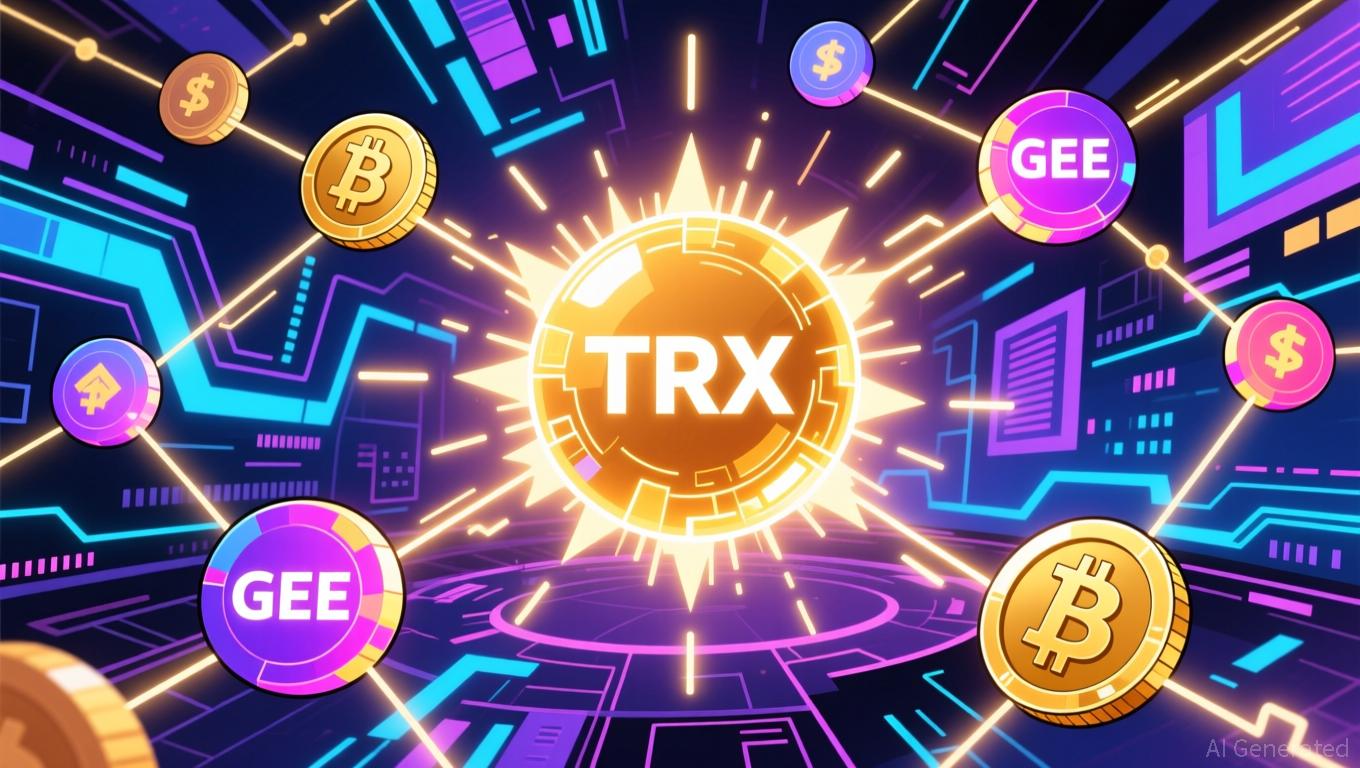XPL Jumps 1316.35% Within a Day as Market Experiences High Volatility
- XPL surged 1316.35% in 24 hours on Oct 15, 2025, reaching $0.5061 amid speculative retail trading. - Despite a 7-day gain of 1289.98%, the token fell 4756.52% over 30 days and 5827.14% annually. - Analysts warn rapid moves are short-lived, with liquidity risks if market sentiment shifts. - Technical indicators show short-term momentum vs. bearish long-term trends, prompting hedging strategies. - Backtests reveal limited predictive value for short-term gains, highlighting market unpredictability.
On October 15, 2025,
XPL’s sharp 24-hour jump occurred alongside a broader market rally fueled by renewed speculative trading in select tokens. Despite the absence of notable on-chain developments or protocol updates during this period, the surge points to increased retail activity and momentum-driven trades. Market analysts caution that such abrupt price spikes tend to be short-lived in the current environment, as liquidity can quickly evaporate if overall sentiment shifts.
Technical analysis of XPL reveals a disconnect between the recent momentum and the token’s underlying fundamentals. Although the price spike briefly pushed XPL above several important resistance points, the broader monthly and yearly trends remain negative. This mismatch between short-term and long-term performance has prompted traders to proceed with caution, often hedging their positions in anticipation of a pullback. The week-long rally also brought a rise in trading volume, but there were no significant inflows from institutional investors.
To evaluate potential trading opportunities in XPL, analysts relied on a combination of momentum indicators and trend-following strategies, which served as the basis for assessing the token’s behavior during sharp upward moves.
Backtest Hypothesis
An event-driven backtest was performed on XPL to assess whether strong price surges could predict future gains. From January 2022 to October 2025, there were 77 days when XPL jumped by 5% or more. In the following 30 days, the average excess return was not statistically significant, with returns of +4.41% versus a +2.57% benchmark. The win rate for these events ranged from 46% to 54% across different holding periods, suggesting limited predictive value for sustained profitability. These results indicate that while short-term momentum can yield impressive returns, it is unlikely to provide a consistent advantage for investors. The findings also emphasize the difficulty of profiting from rapid price swings in such a volatile and unpredictable market.
Disclaimer: The content of this article solely reflects the author's opinion and does not represent the platform in any capacity. This article is not intended to serve as a reference for making investment decisions.
You may also like
Institutional Interest Drives HBAR's Potential for a 50% Rally
- HBAR , Hedera's token, faces potential 50% surge as technical breakouts and institutional adoption align. - Price突破 $0.1373 support and triple-bottom pattern suggest $0.17–$0.19 targets with sustained volume. - Canary Capital's HBAR ETFs and Coinbase derivatives highlight growing institutional interest amid regulatory clarity. - Hedera's AI upgrades and partnerships with BitGo/LayerZero strengthen utility, while SEC guidance accelerates fund approvals.

Kazakhstan's Daring Shift: Swapping Gold's Security for the Unpredictable Promise of Cryptocurrency
- Kazakhstan's central bank plans to invest $300M in crypto using gold reserves to diversify its financial portfolio amid global inflation hedging trends. - Emerging economies like Bhutan and Turkey are leveraging blockchain for financial infrastructure upgrades and fiat currency alternatives amid economic instability. - Central banks in China, India, and Turkey are accumulating gold while exploring hybrid assets like gold-anchored crypto tokens to stabilize economies. - Despite regulatory delays and marke

GeeFi Brings Together 14 Blockchains to Address Crypto Ecosystem Fragmentation
- Tron's 60% fee cut boosts stablecoin dominance, driving USDT transfers and attracting developers via Ethereum-standard smart contracts. - GeeFi (GEE) emerges as a cross-chain solution, integrating 14 blockchains including Tron to address crypto fragmentation with its non-custodial wallet. - GeeFi's $250K+ presale and 55% APY staking rewards highlight its deflationary model, while VISA/Mastercard crypto card plans expand real-world utility. - Market volatility from Fed policies and inflation data undersco

India’s Policy Realignment and U.S. Trade Overhauls Poised to Boost Technology Shares by 2025
- U.S.-India trade reforms and strategic realignment are projected to boost Indian tech stocks by 2025, driven by rising global demand for domestic technology solutions. - India's merchandise exports grew 2.9% YoY in Q1-Q3 2025, supported by government credit guarantees and diversification into markets like UAE and Vietnam. - Kaynes Technology India Ltd reported 58.4% YoY revenue growth, reflecting strong demand for Indian software and IT services despite sector-wide economic uncertainties. - Strategic LPG
